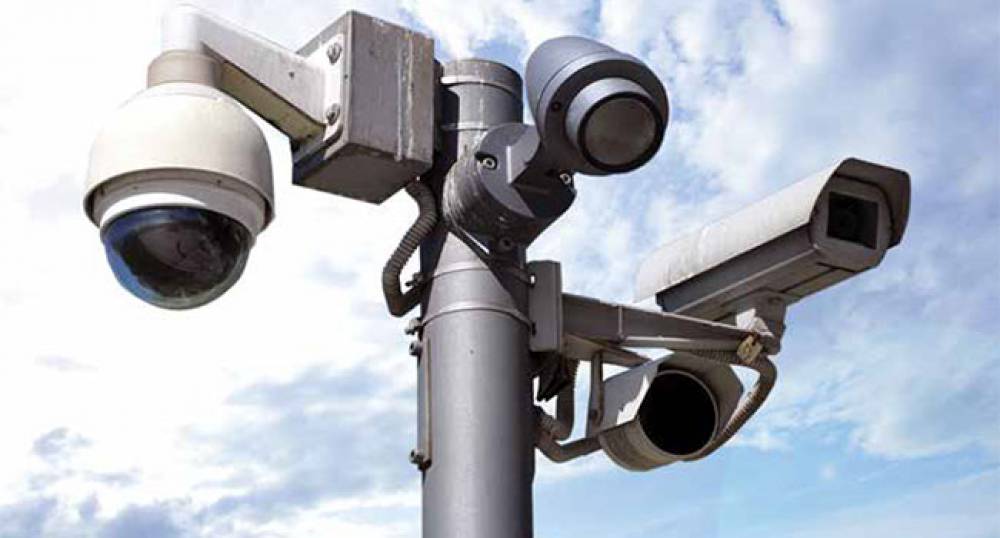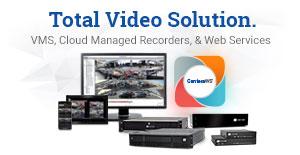Path to the Future

Cloud-based video surveillance is here to stay
Security professionals face many challenges in selecting video surveillance systems that address their unique needs. They must compare features, simplicity of use and of sharing video, system reliability and expandability, and overall affordability. As the technology choices have grown, so have the cybersecurity risks and challenges.
Opening the Playing Field
Today’s security industry was shaped by yesterday’s technologies and solutions. Customers were once locked into proprietary surveillance systems from whichever vendor they selected. Open systems gradually came into play, with tape-based analog VCRs replaced by DVRs, NVRs, and video servers. Entirely new firms introduced VMS software, while analog cameras were increasingly displaced by higher resolution megapixel cameras. Some security brands disappeared through mergers, acquisitions, or being driven out of business entirely as open standards-based surveillance systems became the norm.
The next technology shift is already underway. New companies now offer complete cloud surveillance solutions built from the ground up to offer a range of benefits over the traditional systems that they are increasingly replacing. Existing VMS vendors are adding cloud-based features to their own offerings.
Cloud solutions for video surveillance face similar challenges as traditional systems, while adding even more issues to the mix around scalability and cybersecurity. Yet the benefits are worth it.
Surveillance systems that are based entirely in the cloud have become standard offerings from telephone companies, traditional alarm monitoring companies, and a range of new startups. As IoT enabled cameras connect to the local IP or WiFi network, they then access the cloud to be monitored and administered over the Internet.
Cloud solutions require less dedicated equipment and physical infrastructure than traditional systems, accompanied by reduced installation challenges. The simplicity of the best of this technology results in lower staffing and administrative requirements, simplified system use and increased user satisfaction. Perhaps best of all, cloud solutions offer lower ongoing costs.
Most security professionals are familiar with the home and small business video monitoring that a range of vendors now offer. They bring the ultimate experience in terms of simplified installation and require little to no investment beyond a subscription.
Solutions for Home, Business or Retailer
For a homeowner or small retailer, cloud solutions may prove to suit their needs using a few cameras. The technology grows more complex as larger facilities present issues that must be addressed. The first big challenge is around the availability and cost of network bandwidth.
When multiple cameras are added to a typical cloud solution, the limits of available network bandwidth come into play. Security professionals must often sacrifice image quality and resolution through compression or other temporary solutions in order to stay within the limits of available bandwidth. Even when sufficient bandwidth is available, the cost of its use and the storage of large amounts of video in the cloud may be too burdensome for many customer projects.
Another important issue facing cloud solutions is the potential vulnerability of network devices—including surveillance cameras— to cyberattack. There is no shortage of media coverage of successful malicious hacks, and the risk increases as data move from physical barriers to the cloud without adequate protections in place.
Keeping these challenges in mind, an increasingly popular solution is a hybrid cloud surveillance system. At their heart, leading hybrid solutions are designed to address the challenges of the cloud while leveraging the technology’s benefits. It is important to recognize that while all video needs to be easily available for viewing 24/7, not all video needs to be instantly uploaded to the cloud as it recorded.
With a hybrid cloud solution, all video is recorded locally onto an NVR or video server, residing in the location, just as in a traditional surveillance system. The NVR or server is administered entirely over the cloud, rather than requiring local staff. There is no excessive bandwidth cost and no practical limits on the number of cameras.
Delivering Additional Benefits
The best of these hybrid cloud solutions deliver many additional benefits, with a full-function VMS at the core to the system. User, group and equipment profiles and permissions are stored securely in the cloud, allowing remote access by any authorized administrator, at any time and from virtually anywhere.
The best hybrid cloud systems allow all NVRs and servers to be accessed via a single sign-on tied to their individual or group profile, all managed via the cloud. Video from any location can be easily accessed by authorized users and uploaded to the cloud. Instant notifications of alarms, motion or system health are all delivered over the cloud. A systems integrator or dealer can support their customers with affordable remote monitoring and administration, reducing truck rolls and offering an enhanced recurring revenue stream.
These best-in-class systems offer strong cybersecurity, designed from the start for maximum protection rather than being a later addon for a traditional surveillance system. These features address the major IT security concerns, including no requirement for open inbound ports into the customer’s firewall and the network beyond. Multi-factor authentication is key to the best solutions, as is NIST-compliant data encryption and full transport layer security.
Cloud-based surveillance is already here. As video analytics and AI technologies are further integrated and current bandwidth challenges are addressed, cloudbased surveillance systems will continue to grow into the standard solution for future security professionals.
Source: https://securitytoday.com/Articles/2019/09/01/Path-to-the-Future.aspx
Author: Jeff N Whitney / VP Marketing / Arecont Vision Costar
















